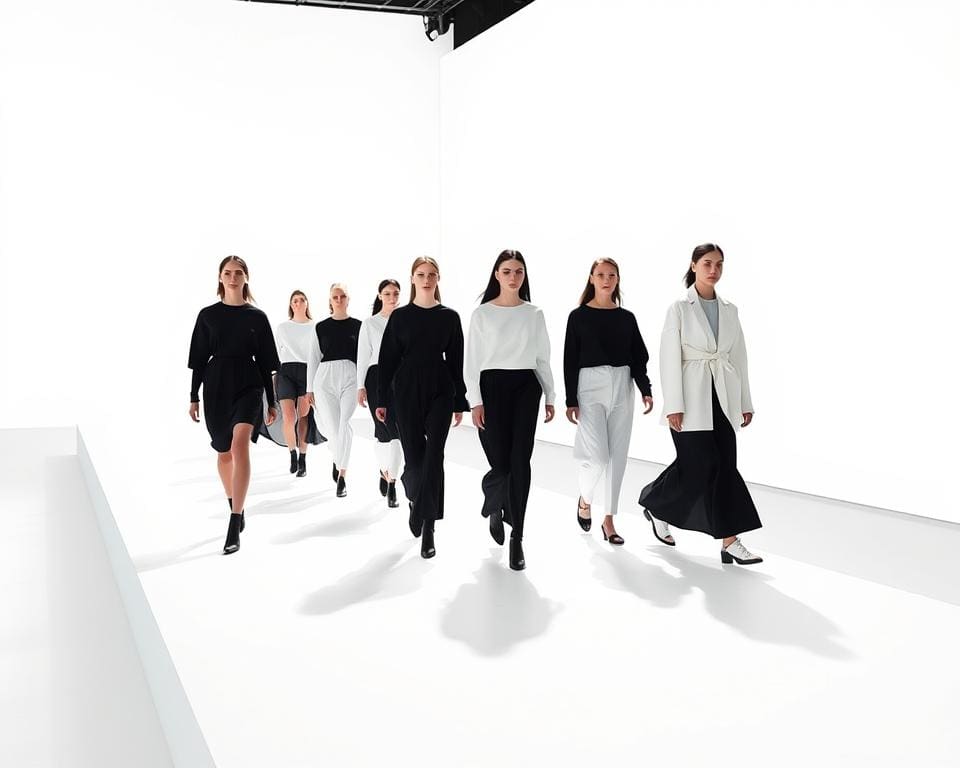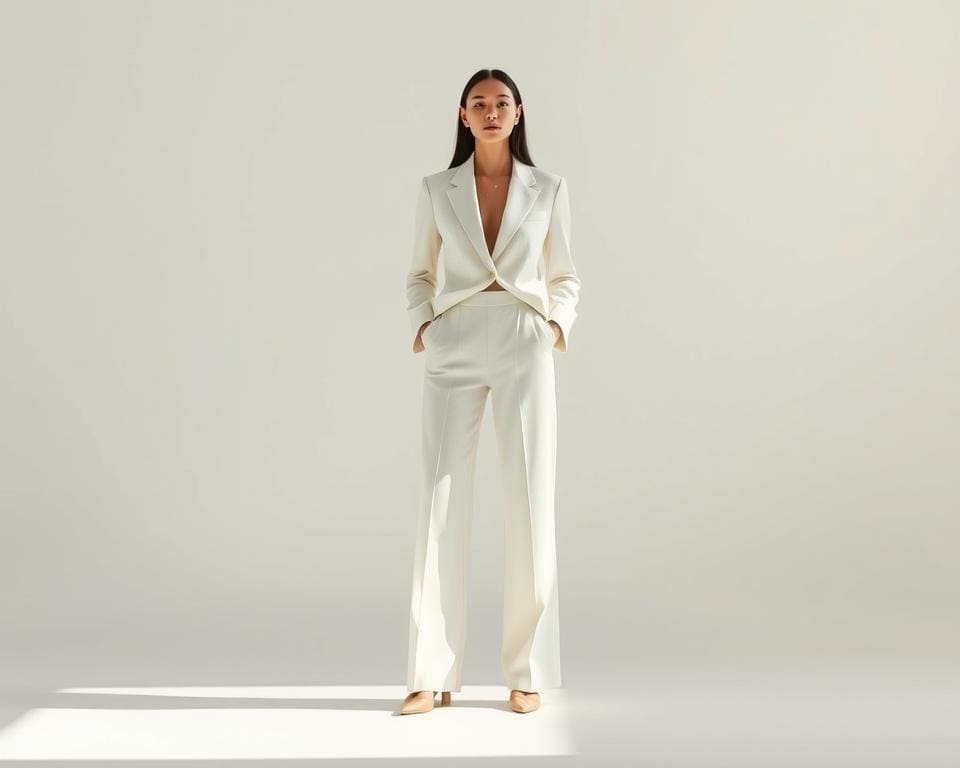In recent years, minimalist fashion has taken centre stage, challenging traditional paradigms of style and consumption. As consumers become increasingly aware of sustainable fashion and its importance for the environment, the appeal of simplicity and intentionality grows. Minimalism is not merely about reducing clutter; it embodies a philosophy that prioritises quality over quantity, allowing individuals to curate their wardrobes with essential pieces that transcend fleeting trends.
This evolution resonates deeply with contemporary sentiment, as many seek to adopt future fashion trends that align with their values and lifestyles. By embracing minimalist fashion, one not only redefines personal style but also contributes to a more sustainable future for the industry as a whole. The question remains: will minimalism truly become the hallmark of fashion in the years to come?
The Rise of Minimalism in Fashion
The rise of minimalism in fashion reflects a broader cultural shift towards simplicity and intentional living. This design philosophy values functionality, striping away excess to focus on what truly matters. As societal values evolve, understanding minimalism becomes essential for both creators and consumers. Recognising its profound roots in various movements offers insight into its application in modern fashion.
Understanding Minimalism
At its core, the minimalist philosophy emphasises clarity and restraint in design. This approach encourages individuals to appreciate quality over quantity, promoting pieces that are versatile and enduring. Embracing minimalism in fashion allows for a personal expression unburdened by trends, inviting a timeless aesthetic.
Historical Context of Minimalism
Historical minimalism has shaped the trajectory of fashion, particularly during the late 20th century. Designers such as Jil Sander and Calvin Klein emerged as pivotal figures, heralding a shift towards simplicity that resonated with changing consumer preferences. Their work epitomised the essence of less is more, influencing an array of collections that prioritised elegant silhouettes and neutral palettes.
The evolution of minimalist fashion continued to gain momentum through key exhibitions and influential works that showcased the beauty of simplicity. As public perception evolved, so did the dialogue surrounding sustainable practices, further intertwining minimalism with contemporary issues in the fashion industry.

Minimalism vs. Fast Fashion
The conversation surrounding fashion increasingly revolves around the stark contrast between minimalist principles and the fast fashion impact. Fast fashion promotes a model characterised by quick production cycles and a throwaway culture, leading to severe consequences for our environment. In stark contrast, minimalist fashion presents a more thoughtful, sustainable approach to clothing choices.
The Impact of Fast Fashion on Sustainability
The fast fashion industry contributes significantly to environmental issues, with staggering statistics illustrating its detrimental effects. The average garment requires around 2,700 litres of water to produce—enough for one person to drink for three years. This intense water consumption impacts global water resources dramatically. Furthermore, the fashion industry is a leading contributor to carbon emissions, accounting for more than 10% of global emissions. The negative implications of fast fashion extend beyond mere statistics, exacerbating waste and contributing to ongoing environmental degradation.
Benefits of Minimalist Fashion Choices
Adopting minimalist fashion choices comes with various advantages that align closely with the principles of sustainability in fashion. Consumers who embrace minimalist clothing benefit from a focus on quality over quantity. Each piece is designed to be versatile, enhancing longevity and allowing for a myriad of styling options. By investing in fewer but higher-quality items, individuals can reduce waste and maintain a smaller ecological footprint. Minimalism not only fosters a more sustainable lifestyle but also invites an appreciation for thoughtful design and craftsmanship.
Is minimalism the future of fashion?
The landscape of fashion is undergoing a significant transformation, steering towards minimalist trends that resonate with a more conscientious consumer base. This shift signals a growing appreciation for simplicity and sustainability, evident in current fashion choices.
Trends Indicating a Shift towards Minimalism
Recent trends highlight a marked transition in consumer behaviour in fashion, with an increasing emphasis on capsule wardrobes. These collections favour a curated selection of timeless pieces that can seamlessly mix and match, promoting longevity over fleeting seasonal styles. As individuals prioritise quality and practicality, brands that embody these principles are thriving.
Consumer Preferences and Minimalism
Surveys indicate that consumers are gravitating towards brands that prioritise ethical production and sustainable practices. This evolution reflects a deeper societal commitment to responsible consumption, where shoppers seek information about the origins of their garments. The future of fashion appears to hinge on these preferences, as more people actively choose minimalist designs that align with their values.
Key Features of Minimalist Fashion
Minimalist fashion presents a harmonious blend of style and usefulness, focusing on essential elements that stand the test of time. This aesthetic prioritises timeless fashion pieces that provide versatility and refinement in any wardrobe. By embracing a curated approach to fashion, minimalist design champions quality over quantity.
Timeless Pieces vs. Seasonal Trends
One of the core minimalist fashion features is the emphasis on timeless pieces. Such garments transcend fleeting trends, allowing individuals to invest in staples that remain stylish year after year. Classic items, such as tailored blazers, crisp white shirts, and well-fitted trousers, consistently serve as the backbone of a minimalist wardrobe. These enduring pieces cultivate a sense of elegance while fostering confidence, regardless of the occasion.
Colour Palettes and Fabric Choices in Minimalist Design
The strategic use of colour palettes in fashion plays a pivotal role in the minimalist approach. Predominantly neutral tones and monochromatic schemes dominate minimalist collections, promoting ease of pairing and effortless coordination. Shades like beige, black, and grey establish a balanced framework, enabling individuals to mix and match effortlessly, resulting in a plethora of stylish combinations.
In addition to colour, the selection of fabrics significantly impacts minimalist design. High-quality, natural materials such as organic cotton, linen, and wool not only enhance the aesthetic but also promote sustainability and longevity. Emphasising these fabric choices displays a commitment to ethical fashion while offering comfort and durability.
Influential Minimalist Designers
In the world of minimalist fashion, a select group of designers serves as guiding lights, pushing the boundaries of simplicity and sophistication. These minimalist designers have not only defined their aesthetic but also influenced a new generation of fashion industry leaders. Their unique visions foster a more sustainable and thoughtful approach to style, which resonates deeply with contemporary consumers.
Profiles of Leading Designers in the Minimalist Movement
One prominent figure in minimalist design is Yohji Yamamoto, renowned for his avant-garde techniques and unconventional silhouettes. His work often marries elegance with a dramatic flair, reflecting his belief in the power of absence. Issey Miyake, another titan of minimalism, is celebrated for innovative textiles that not only enhance functionality but also elevate the senses. His designs articulate a narrative of simplicity and beauty, inviting wearers into a world where each piece is a work of art.
Phoebe Philo has made a significant impact on the minimalist movement as well, particularly during her time at Céline. Philo’s collections have become synonymous with refinement, striking a balance between luxury and everyday wear. Each piece reflects a commitment to craftsmanship and clarity, showcasing how minimalist fashion can be both accessible and aspirational.
Brands Embracing Minimalism
Several minimalist fashion brands continue to revolutionise the industry by adhering to principles of simplicity and functionality. Brands like COS exemplify this ethos through their commitment to timeless design, offering versatile pieces that bridge seasons effortlessly. Everlane introduces transparency to the forefront, combining ethical practices with stylish basics that appeal to the conscious consumer. A.P.C. stands out with its clean lines and understated elegance, offering a wardrobe staple that resonates with those seeking quality and longevity in their clothing choices.
Challenges Facing Minimalist Fashion
The rise of minimalist fashion has been met with a range of challenges that impede its widespread adoption. As the industry grapples with shifting consumer preferences, the issue of minimalist fashion resistance becomes more pronounced. Traditional shopping habits often favour fast fashion’s immediate gratification, creating a significant hurdle for those advocating for a more thoughtful approach to clothing consumption.
Consumer Resistance to Change
Resistance to embracing minimalist fashion can be attributed to several factors. Many consumers have developed a strong affinity for the excitement and novelty offered by fast fashion. This results in a reluctance to let go of habitual behaviours associated with frequent purchasing. The advantages of minimalist fashion, such as timelessness and sustainability, often struggle to resonate with an audience accustomed to the ever-changing trends and lower price points of mass-market retailers.
The Financial Implications for Designers
For designers committed to minimalist principles, the financial aspects of fashion present daunting obstacles. Crafting high-quality, sustainable garments typically requires a greater investment in materials and production processes. This emphasis on quality often translates to higher retail prices, which can deter a broader audience. Brands aspiring to champion minimalism must navigate these economic realities while conveying the long-term value of their collections, striving to shift perceptions of minimalist fashion into a lucrative niche.
The Future of the Fashion Industry and Minimalism
As the fashion industry navigates a rapidly changing landscape, the potential for minimalism to rise to the forefront emerges as a beacon of hope. Future trends indicate that consumers are increasingly gravitating towards thoughtful consumption, making choices that support sustainable practices and ethics. This shift aligns perfectly with a fashion industry outlook that prioritises environmental consciousness and simplicity over the chaotic cycles of fast fashion.
Technological advances are paving the way for innovative approaches to minimalism in future fashion, allowing designers to create timeless pieces that resonate with the values of modern consumers. Digital platforms enable brands to promote a lifestyle that embraces fewer, high-quality items, encouraging individuals to curate their wardrobes around essential pieces. This not only diminishes waste but also fosters an appreciation for craftsmanship and sustainable materials.
Envisioning a future where minimalism flourishes within the fashion industry inspires a movement towards reducing environmental impacts while enhancing aesthetics. By adopting minimalist principles, consumers can reflect on their choices, leading to a richer relationship with their clothing. As the fashion dialogue shifts to celebrate quality over quantity, we may well witness a new era defined by style that is both enchanting and environmentally responsible.









